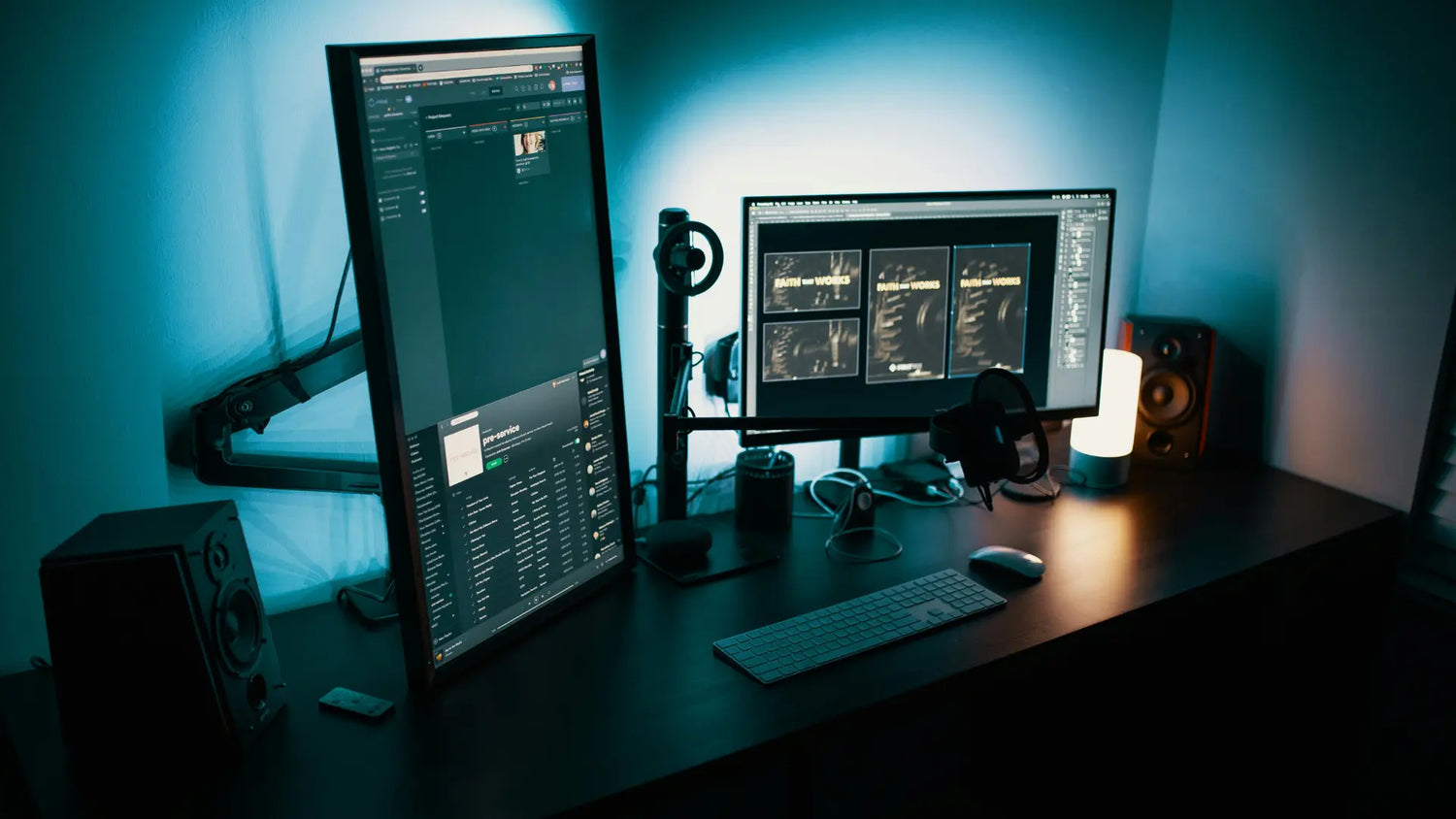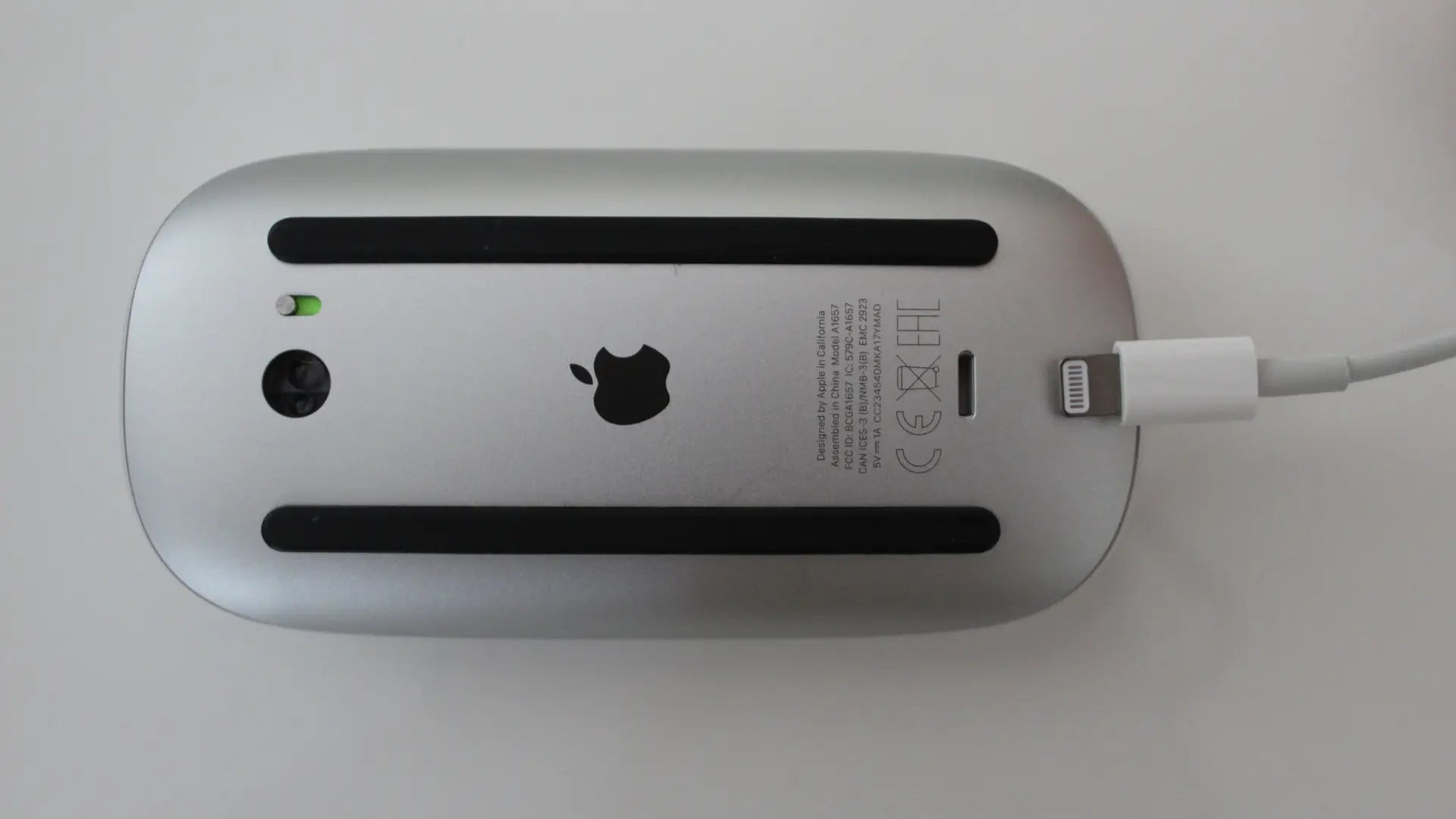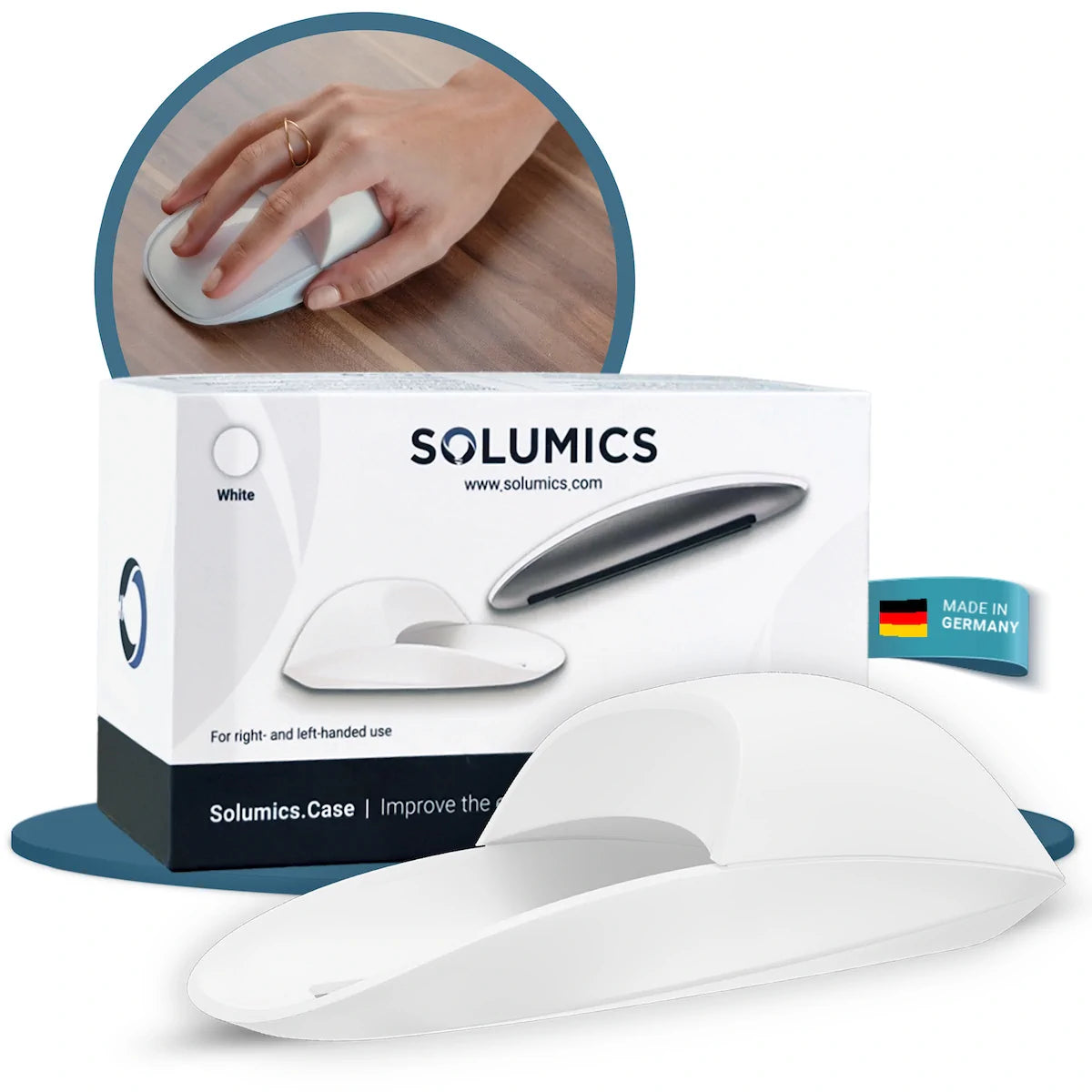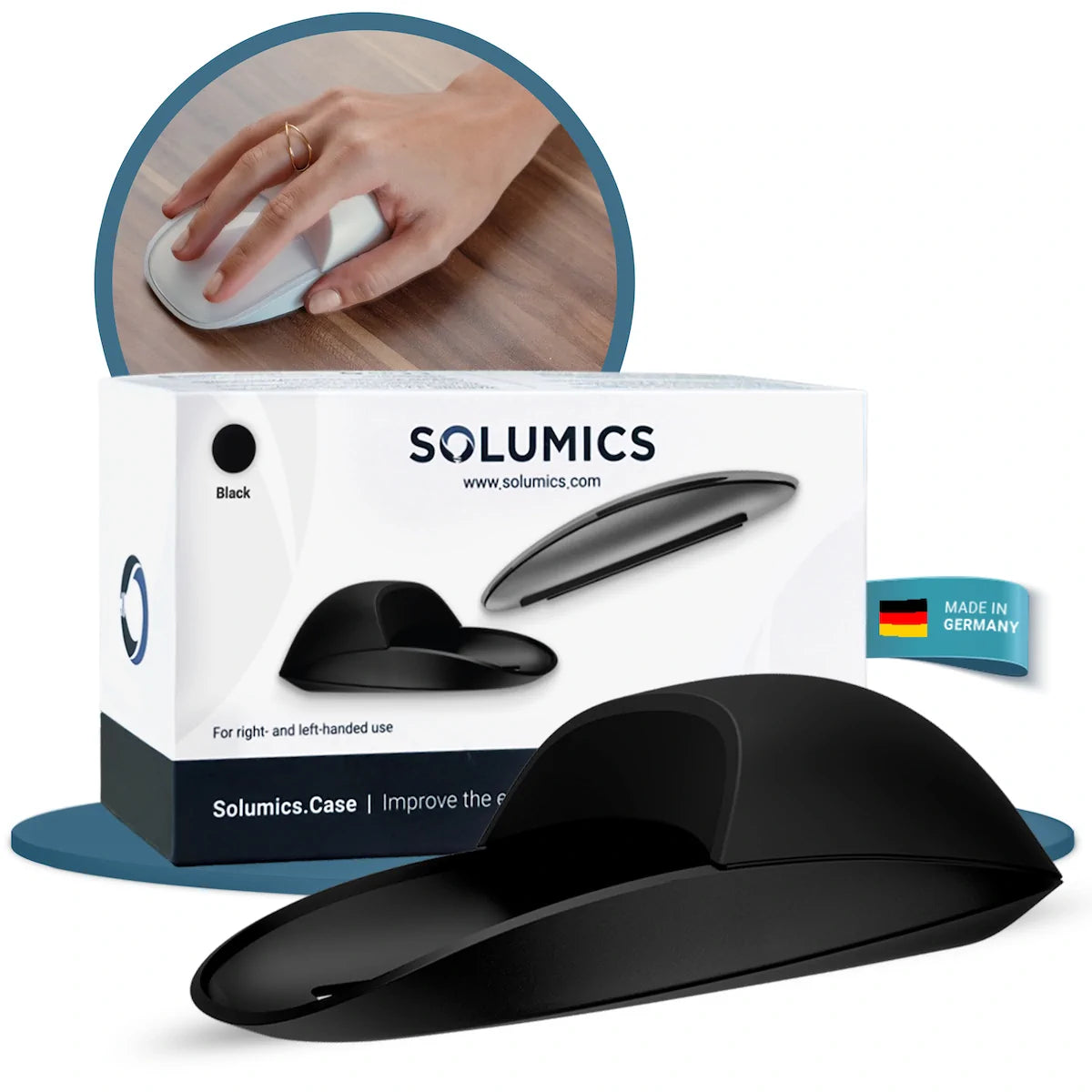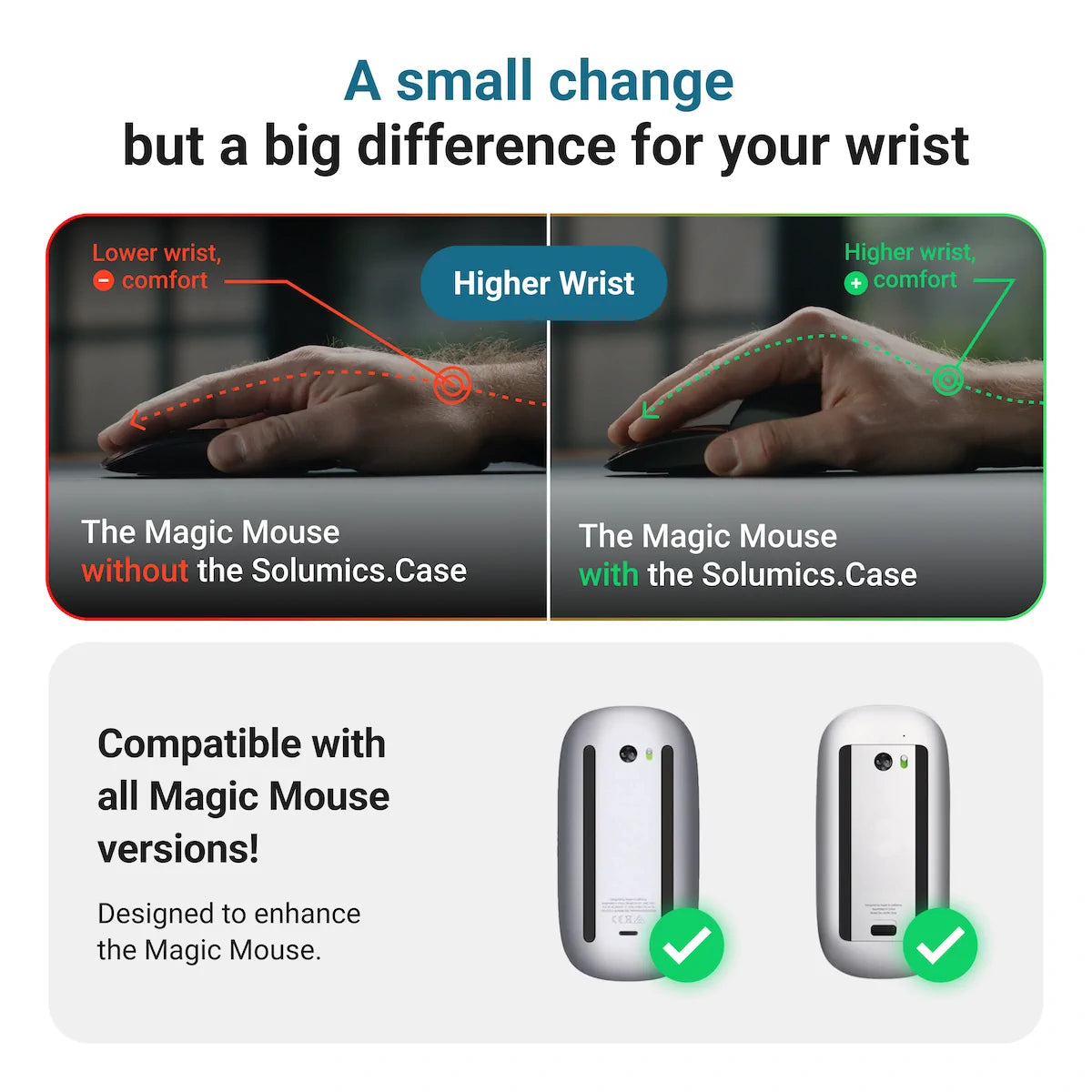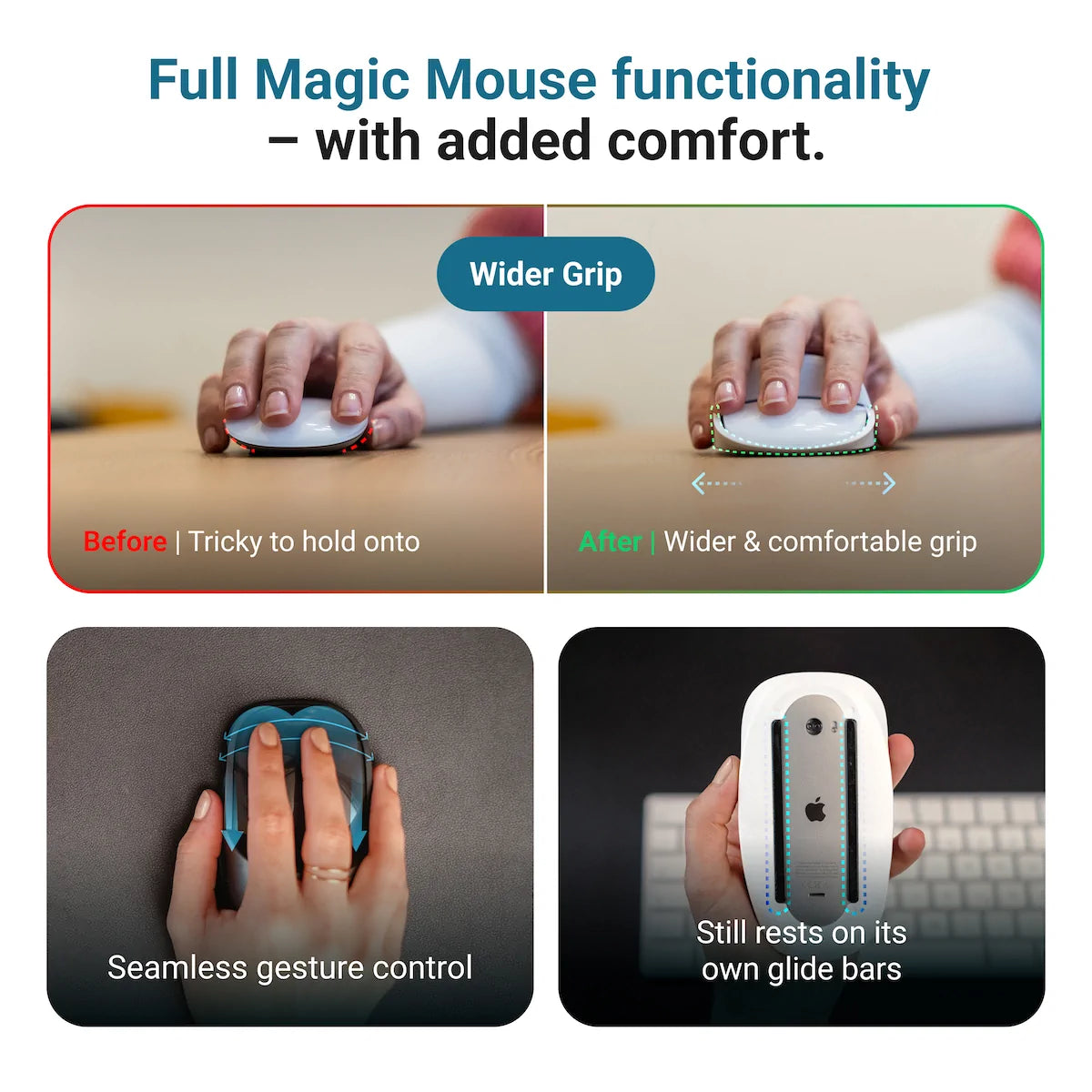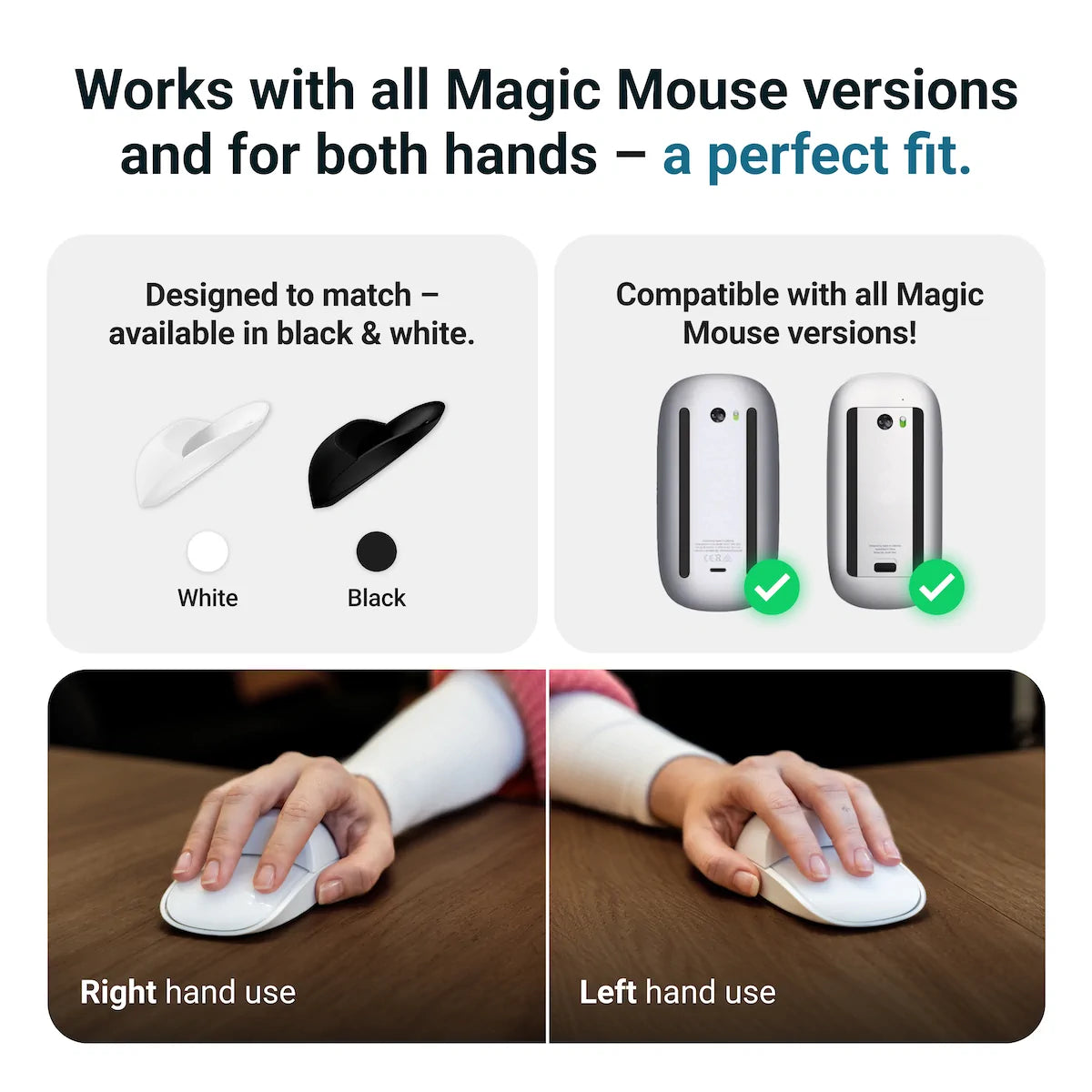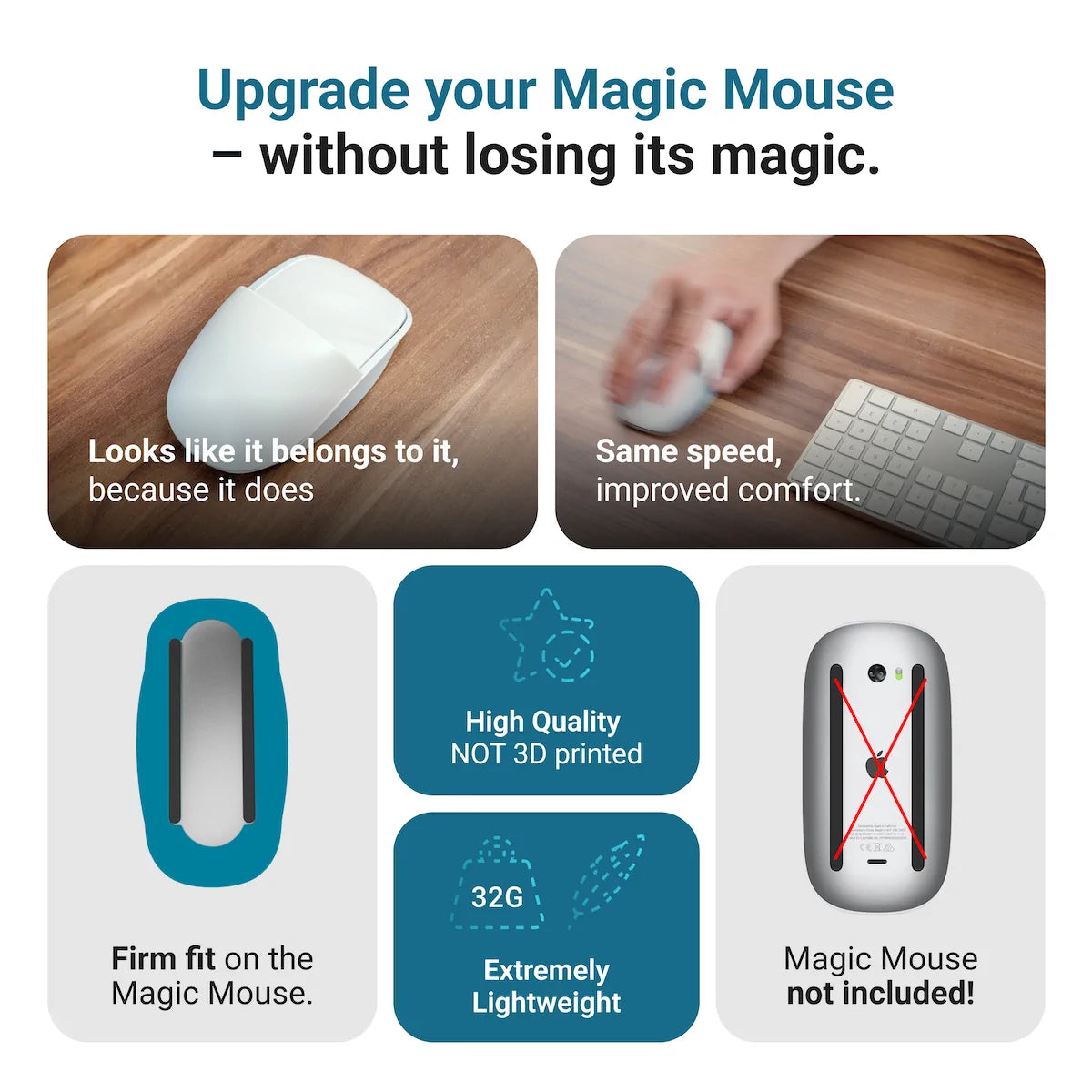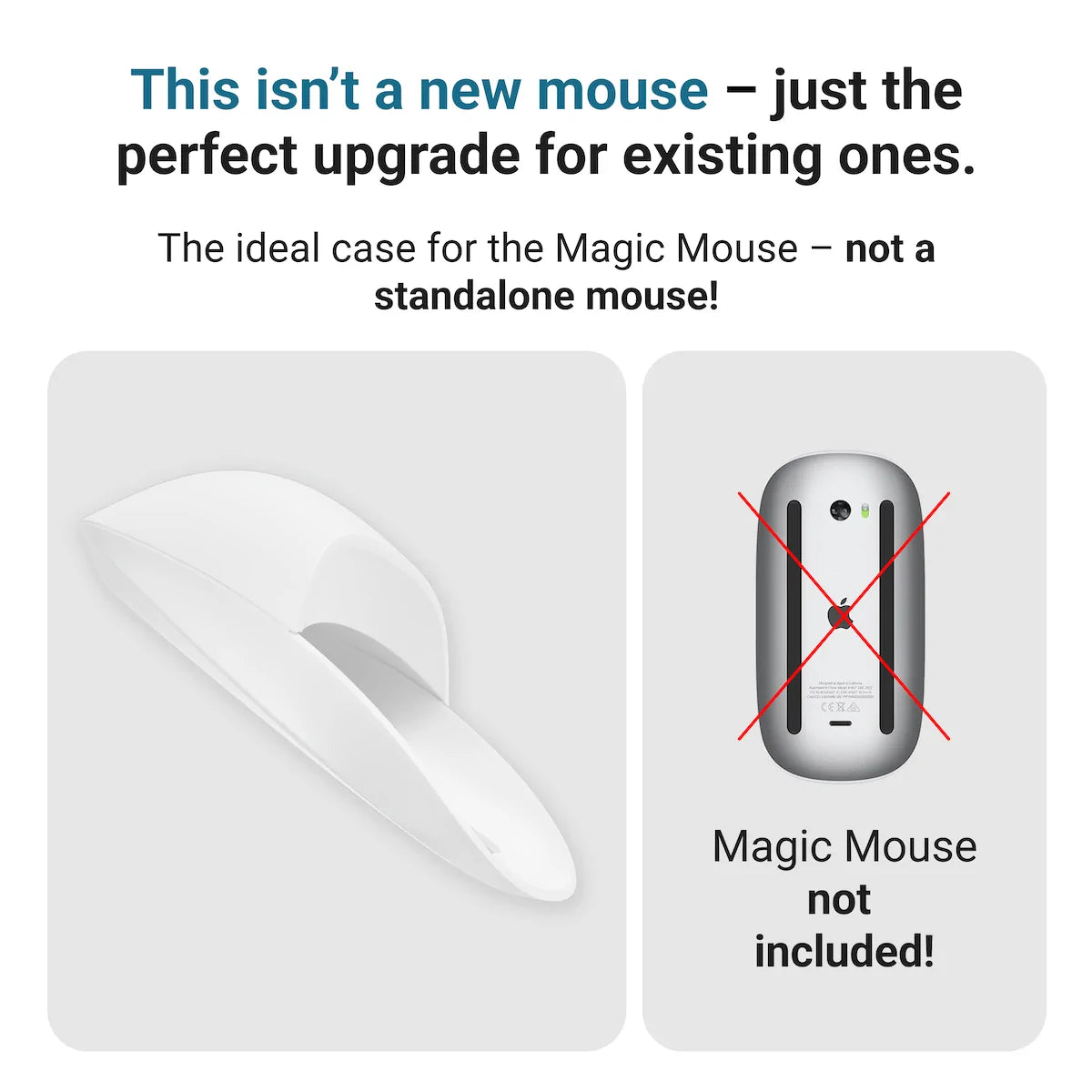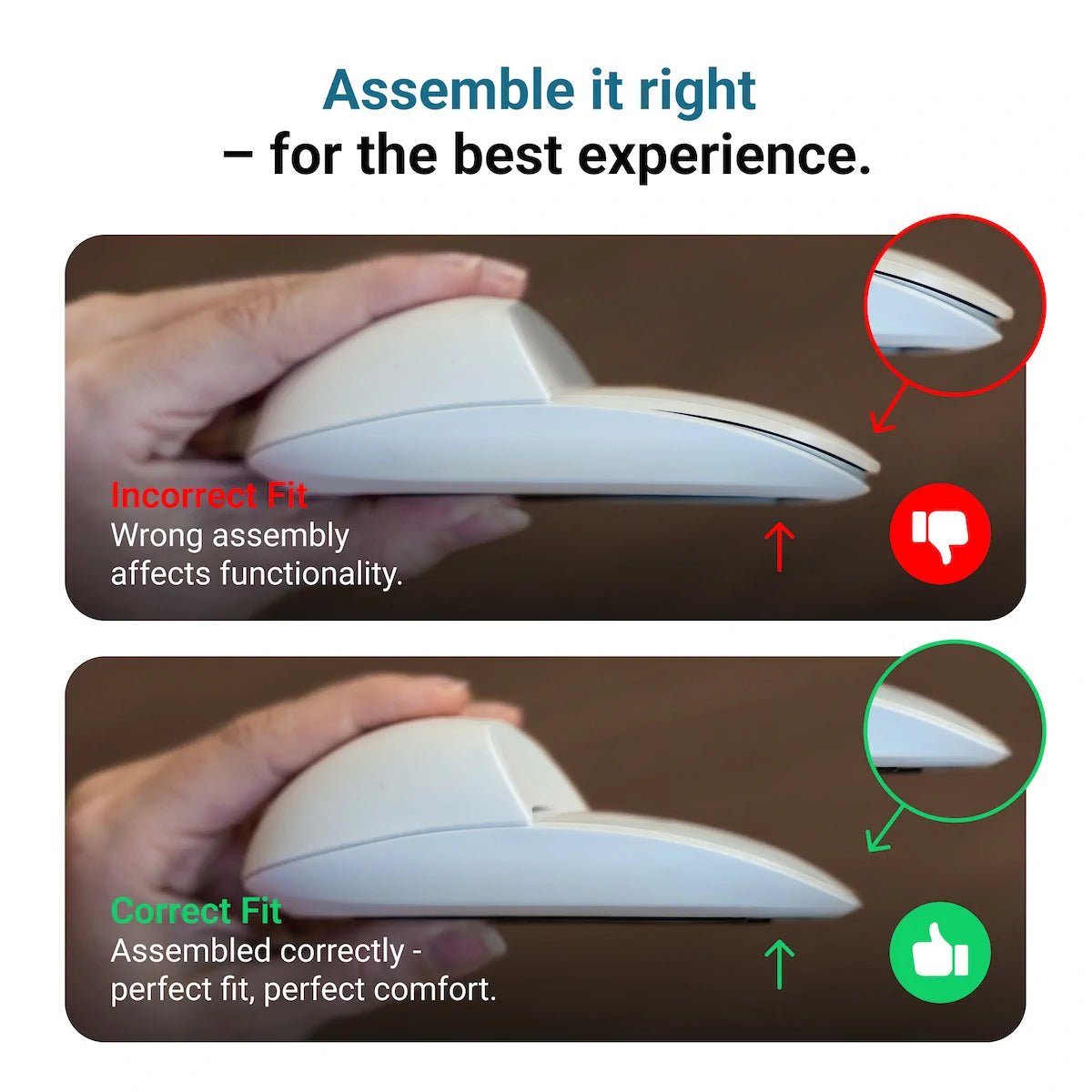When considering a new mouse, you might find yourself intrigued and skeptical about the thought of using the controversial Magic Mouse. Known for its unique design and gesture features, it challenges the conventional expectations set by traditional mice. Your first encounter might involve struggling with tasks like playing Counter-Strike, where precision and quick reflexes are critical.
Imagine your frustration as you grapple with problems like inaccurate sensors, awkward scrolling, and an unfamiliar button layout. Despite these challenges, the Magic Mouse offers an elegant solution to connectivity issues when paired with an Apple laptop, providing a unique user experience worth exploring.
Key Takeaways
- Magic Mouse offers a unique blend of aesthetics and functionality.
- Users might face difficulties with gaming and precision tasks.
- Scroll and gesture features stand out, but may require adjustment.
Initial Gaming Experience with the World's Most Hated Mouse

Playing Counter-Strike with this mouse feels almost impossible. The sensor's placement at the top makes precise movements challenging. Switching weapons works, but turning around rapidly isn't an option. You might find yourself stuck facing the same direction longer than you'd like.
During a death match, getting even a few kills can be frustrating. The mouse sometimes fails to register shots, leading to some unwanted engagements. The scrolling can be a pain when you need to change your crosshair quickly, detracting from the overall experience.
The Magic Mouse has some quirks. Buttons are harder to press compared to other mice, possibly to avoid accidental clicks. The sensor’s unusual position messes with muscle memory for most gamers. Scrolling works well, but only with one finger lifted, which can be awkward.
Changing grenades or performing quick maneuvers becomes nearly impossible because of its single-click nature. It can detect multiple fingers, providing some extra functionality, but often misinterprets your intent. Custom setups in third-party tools minimize these issues, but they don’t eliminate them.
Gestures like two-finger swipes and taps are handy, yet sometimes problematic, registering unintentional moves. Despite its sleek design, the lack of a physical scroll wheel might leave you craving that tactile feedback. The flat shape requires an adjustment period, especially for larger hands.
So, despite its premium look and intuitive gestures, using the world's most hated mouse for gaming seems far from ideal.
Solumics Case: Enhancing Your Magic Mouse Experience

Despite its elegant design and smooth movements, the flat and low profile of the Magic Mouse may not be comfortable for everyone, especially during extended use. Luckily, the Solumics Case is designed to alleviate these issues, offering an ergonomic solution that doesn't compromise on the Magic Mouse's aesthetic or functionality.
Benefits of the Solumics Case
- Ergonomic Design: Elevates the palm area, reducing hand fatigue during long hours of use.
- Lightweight Construction: Ensures the mouse remains easy to maneuver.
- Enhanced Grip and Control: Improves handling, especially helpful for those who find the original design too flat or slippery.
- Easy Application: The case attaches in less than three seconds and fits perfectly for stability and protection.
- Compatibility: Works with all versions of the Apple Magic Mouse.
The Solumics Case aims to make your Magic Mouse more comfortable, functional, and enjoyable. It can transform your experience, ensuring that the sleek design remains intact while boosting ergonomic quality and overall usability.
Bluetooth Mouse Limitations and Pulling Rate Problems

Bluetooth mice often exhibit particular constraints that can hinder their performance. For instance, the polling rate, which determines how frequently the mouse reports its position to the computer, is a critical factor. Gaming mice usually maintain a polling rate of 1000 Hz, meaning they communicate with the computer 1000 times per second. This results in a smooth and responsive experience.
Bluetooth technology, however, restricts the maximum polling rate to 125 Hz. Although this is generally sufficient for everyday use, it can become problematic for activities that demand high precision and minimal latency, such as gaming. The inconsistency in performance is noticeable when the mouse reacts well on some days and lags badly on others.
Moreover, some users experience specific issues when pairing Bluetooth mice with different operating systems. For example, connecting a mouse to a Windows laptop might reduce lag significantly, whereas the same mouse may perform poorly with an Apple laptop. This disparity can lead to varying user experiences and may present additional obstacles for those who require consistent performance.
To alleviate these issues, users often explore alternatives such as the Magic Mouse. However, this device introduces its own set of challenges, being designed with unique features that might not suit everyone's preferences. The sensor placement, button press sensitivity, and scrolling mechanics can all differ significantly from more conventional mice, demanding a period of adjustment.
Given these factors, it's important to consider the specific needs and use cases when selecting a Bluetooth mouse to ensure it matches your requirements for precision and reliability.
The Apple Magic Mouse Interaction

Performance in Gaming
Playing Counter-Strike with the Magic Mouse is challenging. Transitioning weapons is smooth, but turning quickly becomes nearly impossible. The placement of the sensor creates unexpected movement issues, making precise controls difficult. Also, pressing buttons is notably harder, potentially to prevent accidental clicks, but this only complicates rapid commands in-game.
Connection Issues and Lag
When paired with your Mac, you might notice significant lag using some Bluetooth mice. This lag is nearly absent when using the Magic Mouse. The polling rate of the Magic Mouse is consistent, unlike other Bluetooth mice that can be erratic.
Scrolling and Gestures
The Magic Mouse’s scrolling functions present a mix of benefits and challenges. Inertia scrolling is smooth but only works well if other fingers aren't touching the mouse. The mouse’s gestures, like two-finger swipes to switch desktops or tap to access Mission Control, offer convenience. However, resting fingers on the mouse may trigger unintended actions.
Compatibility and Features
While the Magic Mouse offers some customization with tools like BetterTouchTool, it lacks functionality for some users' needs, such as seamless zooming in specific apps. For most, zooming and gestures work adequately, but frequent users of software requiring precise control may find it limiting. The mouse's design, low profile, and aesthetic appeal are characteristic of Apple's sleek designs, though this may impact comfort, especially for larger hands.
Practical Considerations
Using the Magic Mouse requires frequent adjustments and compromises. Although its design and gestures can enhance productivity, the added effort to maintain smooth operation, particularly for tasks requiring quick or precise movements, can be frustrating. The reliance on specific hand positions and the lack of a traditional scroll wheel feel can detract from the overall experience for some users.
Analyzing the Magic Mouse Design and Ergonomics

The design and ergonomics of the Magic Mouse are quite unique. Its flat and low profile resembles a pancake, making it feel somewhat like moving a flat object on your table. This can be challenging for those with larger hands. The sensor positioning near the top of the mouse can be disorienting if you're used to a center-placed sensor, affecting your precision in tasks requiring high accuracy.
Button and Gesture Functionality
The buttons on the Magic Mouse are harder to press compared to other mice. This might be intended to prevent accidental clicks. The top surface acts like a trackpad, enabling gestures like two-finger swipes for navigating virtual desktops and tapping for mission control. However, using gestures can sometimes lead to unintended swipes or clicks, especially if your fingers rest slightly on the edges.
Inertia Scrolling
The scrolling experience mirrors that of a trackpad but requires precise finger positioning. Resting another finger on the mouse can disrupt the smooth scrolling, forcing you into a claw-like grip. For many users, this is less than ideal, especially during long periods of use.
Usability in Creative Tasks
For those working in creative software like Premiere Pro, the limitations become more apparent. The absence of intuitive zooming gestures and the need for specific hand movements can interrupt your workflow. However, it's possible to adapt by using modifier keys and horizontal scrolling for a smoother experience.
Physical Comfort and Aesthetics
Physically, it's a sleek, premium-looking device that's visually appealing with the Apple logo prominently displayed. Still, the flatness might not provide the ergonomic comfort that some users need, especially if you have larger hands. Despite this, it aligns perfectly with Apple's minimalist design ethos.
User Interface and Gesture Functions

The Magic Mouse integrates a touch-sensitive surface that replaces traditional buttons and scroll wheels. This feature allows you to make use of various gestures, enhancing your interaction with the device. For example, a two-finger swipe lets you switch between virtual desktops or activate mission control. You can also navigate back and forward in your browser with ease.
One notable challenge is the lack of zoom functionality through gestures. Pinching to zoom, a common feature in other devices, is absent here, much to the detriment of users who frequently need to zoom in applications like Premiere Pro. Instead, you can use the smart zoom option by double-tapping the mouse.
The scrolling experience is mixed. Although inertia scrolling resembles the smooth experience of a trackpad, any additional finger resting on the mouse disrupts this flow. This forces users to adopt a claw-like grip, often leading to discomfort over extended use.
Within certain applications like Audacity, the scrolling is exceptionally smooth. However, tasks that require simultaneous clicking and scrolling present difficulty due to the mouse's design. For example, you cannot pick something up and scroll down simultaneously without additional software or settings.
Button customization is possible through third-party apps like Better Touch Tool, enabling more intuitive actions like three-finger press for closing tabs. This tool also helps mitigate accidental clicks by setting up ignore areas.
The Magic Mouse also has a large touch area extending to its back, which can be both an advantage and a source of unintended inputs. Utilizing it correctly can significantly enhance your workflow, but it requires some adjustment, especially if you are used to more conventional mouse designs.
In summary, the Magic Mouse offers a unique interface driven by touch gestures, suitable for Apple environments, but it does come with its set of limitations that you may need to work around.
Customization Woes with Better Touch Tool

When attempting to customize the Magic Mouse using Better Touch Tool (BTT), several challenges arise. For instance, configuring the mouse to zoom by pinching, similar to other devices, proves futile. BTT allows for numerous custom gestures and features, but not all work seamlessly with the Magic Mouse.
While trying to establish a setup for tasks like closing tabs with a three-finger press or adding specific ignore areas to reduce accidental clicks, the results remain inconsistent. The mouse sometimes registers unintended actions, creating frustration.
In practice, gestures such as a two-finger swipe for switching virtual desktops or tapping for mission control are available. Yet, these are less responsive compared to the trackpad. Trying to map gestures consistently proves tricky, as the mouse might confuse simple rests with intentional Magic Mouse commands. These mixed results highlight the limitations of using BTT for customization.
Scrolling and Zooming Challenges

The Magic Mouse presents unique challenges, particularly in scrolling and zooming. It uses inertial scrolling similar to a trackpad but only with one finger. If you rest another finger on the mouse, the smooth scrolling feature is disabled, forcing you to hold one finger in the air.
Additionally, you cannot combine actions such as holding and scrolling simultaneously without using extra software. Zooming presents another difficulty; there is no pinching-to-zoom feature, a limitation especially noticeable in applications like Premiere Pro. Custom solutions through third-party apps often prove inadequate.
In contrast, tasks like switching virtual desktops or using Mission Control can be efficiently performed with multi-finger gestures. However, unintentional input from resting fingers remains a consistent issue. The mouse's lack of a mechanical scroll wheel may disappoint users who prefer tactile feedback. Features like smart zoom, activated by double-tapping the mouse, provide some functionality but fall short for more demanding needs.
Aesthetic Appeal and Physical Form Factor

The design of the mouse is sleek and minimal. Its flat profile resembles a slim trackpad, barely poking above your desk surface. This means it blends seamlessly with a clean desk setup and could be visually appealing to those who favor a clutter-free environment.
The exterior is smooth and unbroken, featuring a glossy finish that shines under light. The Apple logo graces the back, adding a touch of understated sophistication. If you appreciate minimalist aesthetics, this mouse seems to be crafted with you in mind.
Physically, the buttons are less tactile than other mice, requiring a bit more pressure to actuate. This could be to prevent unintended clicks, enhancing precision. The unique positioning of the sensor at the top alters the common navigation experience, demanding some adjustment.
In terms of ergonomics, the mouse’s geometry might challenge your muscle memory, especially if you're accustomed to more traditional designs. Holding it might feel awkward at first, but with practice, it could become second nature. Still, its overall flatness may cause strain during extended use. The scrolling mechanism offers smooth inertia scrolling akin to a trackpad, although it requires specific finger positioning. Scrolling can be impacted if any other finger touches the surface, which may lead to a somewhat uncomfortable "crab hand" position.
Despite these quirks, the device boasts numerous multi-touch gestures like two-finger swipes for switching desktops and mission control, enhancing productivity if mastered. The absence of a mechanical scroll wheel eliminates the traditional tactile feedback, which could be missed if you enjoy the mechanical feel.
In essence, this mouse might not be the most comfortable or intuitive for every user, but its integration into Apple's ecosystem and elegant design make it a distinct choice for those prioritizing aesthetics and seamless connectivity.
Frequently Asked Questions
The Magic Mouse struggles with gaming due to its sensor placement, which makes precise movements difficult. Gamers may find it challenging to perform quick maneuvers, switch weapons, or navigate accurately, making it less ideal for high-precision tasks like playing Counter-Strike.
The Magic Mouse features a flat, low-profile design with a touch-sensitive surface that supports gestures like two-finger swipes and taps. It lacks a traditional scroll wheel, and the buttons are harder to press to avoid accidental clicks.
Common issues include difficulty in gaming due to sensor placement and button sensitivity, awkward scrolling that requires precise finger positioning, and the lack of a physical scroll wheel, which can affect user comfort and accuracy.
The Solumics Case provides ergonomic benefits by elevating the palm area, reducing hand fatigue, and enhancing grip and control. It is lightweight, easy to apply, and compatible with all versions of the Magic Mouse, improving overall comfort and usability.
Bluetooth mice often have a lower polling rate (125 Hz) compared to wired gaming mice (1000 Hz), leading to potential lag and performance inconsistencies. These limitations can affect high-precision tasks and vary between different operating systems.

